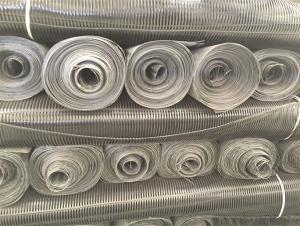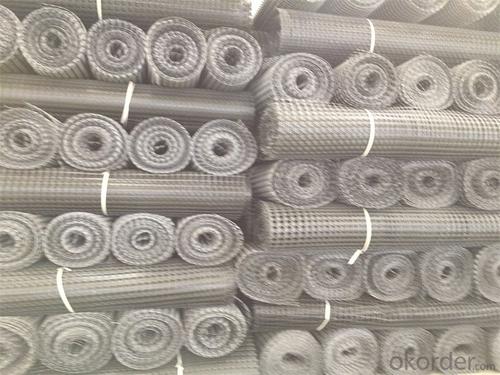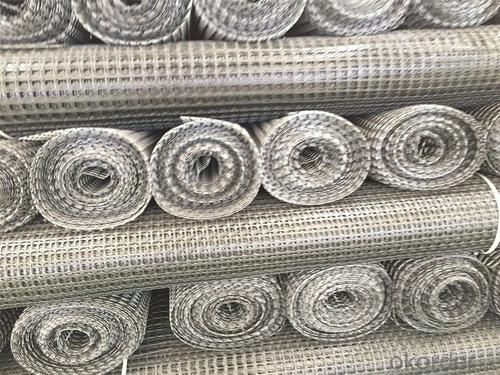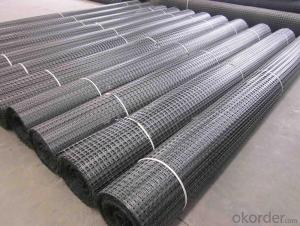Titan Geogrids - Volume Production Manufacturer
- Loading Port:
- Tianjin
- Payment Terms:
- TT OR LC
- Min Order Qty:
- 20000 m²
- Supply Capability:
- 50000000 m²/month
OKorder Service Pledge
OKorder Financial Service
You Might Also Like
Fiberglass Geogrid Introduction:
Fiberglass geogrid is a kind of planar mesh material using alkali-free fiberglass yarn as base body and then coated with high quality modified asphalt. It is warp knitted with oriental structure which gives full play of yarn strength and improves its mechanical property to make the product high tensile, tearing and creep-resistant. Moreover, the composite property of coating with asphalt makes full protection of the fiberglass matrix and greatly improves its wear and shear resistance. All the advantageous functions make the product have a good performance in pavement strengthening, track cracking and solving difficulties of strengthening the bituminous pavement.
Fiberglass Geogrid Features:
1. Light weight, high tensile strength, high modulus, low elongation and good toughness.
2. Corrosion resistance, no long-term creep, long life span.
3. Good physical and chemical stability and good thermal stability.
4. Resistant to fatigue cracking, high-temperature track and low temperature shrinkage cracking.
5. Delaying and decreasing crack reflection.
Specifications | PET20-20 | PET30-30 | PET40-40 | PET50-50 | PET80-80 | PET100-100 | PET120-120 |
Elongation(%) | 10%~15% | ||||||
Vert Tensile strength(KN/m) | 20 | 30 | 40 | 50 | 80 | 100 | 120 |
Horiz Tensile strength(KN/m) | 20 | 30 | 40 | 50 | 80 | 100 | 120 |
Grid(mm) | 12.5×12.5 20×20 24.5×24.5 | ||||||
Width(m) | 1—6 | ||||||
Fiberglass Geogrid Application:
1. Road surface asphalt overlay construction engineering; Asphalt layers
reinforcement.
2. Converting old cement concrete road into composite road; Restraining
reflection cracking caused by block shrinkage.
3. Road extension; Preventing and controlling the cracking caused by new
and old combination and uneven settlement.
4. Treatment of the conjunction between tunnel and bridge or foundation.
Packaging & Shipping:









FAQ:
1. How to order your geogrid ?
a) Tensile strength in warp & weft direction
b) Grid size
c) Roll Width and length
d) Quantity
2. What is the Payment term?
a) TT
b) LC AT SIGHT
c) cash
d) 30% contact value as deposit ,the blance 70% be paid after received the copy of bl .
3. Delivery time
a) 19-25 days after received your depsit .
4. What is MQQ ?
a) 2500 m2 as MQQ , we can also produce sample for you .
Welcome to send your inquiry to us, and if you have any question, we can also help you.
- Q: What is a geogrid?
- A geogrid is a type of synthetic material made from polymers, typically used in civil engineering and construction applications. It is a grid-like structure with open spaces that allow for soil or aggregate to interlock with the grid, providing reinforcement and stability to the ground. Geogrids are commonly used to enhance the strength and load-bearing capacity of soil, preventing soil erosion and improving the performance of structures such as retaining walls, roads, and embankments.
- Q: How much is the tensile strength of geogrid???????
- Divided into three categories: the overall plastic stretch: two-way products: 15KN--50KN one-way products: 50KN---300KN
- Q: Do geogrids affect the permeability of soil?
- Yes, geogrids can affect the permeability of soil. Geogrids are typically used to reinforce soil and improve its stability. They create a barrier that prevents soil particles from shifting, which can reduce the permeability of the soil. However, geogrids can also enhance the drainage properties of soil by providing channels for water to flow through, thereby potentially increasing its permeability in certain cases.
- Q: Can geogrids be used in ground stabilization for telecommunications infrastructure?
- Yes, geogrids can be used in ground stabilization for telecommunications infrastructure. Geogrids are commonly used in civil engineering projects to reinforce and stabilize soil, making them suitable for supporting the weight and load of telecommunications infrastructure such as towers, poles, and cables. They can effectively improve the soil's strength and prevent settlement, ensuring the stability and longevity of the infrastructure.
- Q: How do geogrids improve the performance of geotextile erosion control blankets?
- Geogrids improve the performance of geotextile erosion control blankets by providing additional reinforcement and stability to the blanket. They enhance the tensile strength and load-bearing capacity of the geotextile, preventing excessive soil erosion and improving overall erosion control effectiveness.
- Q: Are geogrids effective in stabilizing embankments for pipeline crossings?
- Yes, geogrids are effective in stabilizing embankments for pipeline crossings. Geogrids provide reinforcement and enhance the stability of the soil, preventing erosion and minimizing settlement. They distribute loads efficiently, increasing the overall strength of the embankment and ensuring long-term stability for pipeline crossings.
- Q: What is the effect of creep rupture on geogrid performance?
- Creep rupture can significantly impact the performance of geogrids. Geogrids are engineered materials commonly used in civil engineering applications to reinforce soil and provide stability. Creep rupture refers to the gradual deformation and eventual failure of a material under constant load over time. When geogrids experience creep rupture, their structural integrity is compromised, leading to reduced performance and potential failure. The creep rupture phenomenon can cause the geogrids to elongate, lose their load-bearing capacity, and exhibit increased deformation under sustained loads. This can result in the geogrids being unable to effectively reinforce the soil, leading to soil settlement, slope instability, or even structural collapse. To ensure optimal geogrid performance and prevent creep rupture, it is crucial to select geogrids with high creep resistance and proper design considerations. Regular monitoring, maintenance, and periodic inspections are essential to identify signs of creep rupture and address any potential issues promptly.
- Q: Can geogrids be used in retaining walls for waterfront parks?
- Yes, geogrids can be used in retaining walls for waterfront parks. Geogrids provide reinforcement and stability to the soil, preventing erosion and maintaining the integrity of the retaining wall. They are commonly used in such applications to enhance the strength and durability of retaining walls in waterfront parks.
- Q: What are the factors that affect the durability of geogrids?
- There are several factors that can affect the durability of geogrids. These include the type and quality of the materials used in manufacturing the geogrid, the environmental conditions in which it is installed, the level of stress and strain it is subjected to, and the presence of any chemical or biological agents that can degrade the geogrid over time. Additionally, proper installation techniques and maintenance practices can also play a role in determining the durability of geogrids.
- Q: What is the overlap length of the two-way geogrid? What is the overlap length of geotextiles?
- The double lap length is 50cm
Send your message to us
Titan Geogrids - Volume Production Manufacturer
- Loading Port:
- Tianjin
- Payment Terms:
- TT OR LC
- Min Order Qty:
- 20000 m²
- Supply Capability:
- 50000000 m²/month
OKorder Service Pledge
OKorder Financial Service
Similar products
Hot products
Hot Searches
Related keywords




























